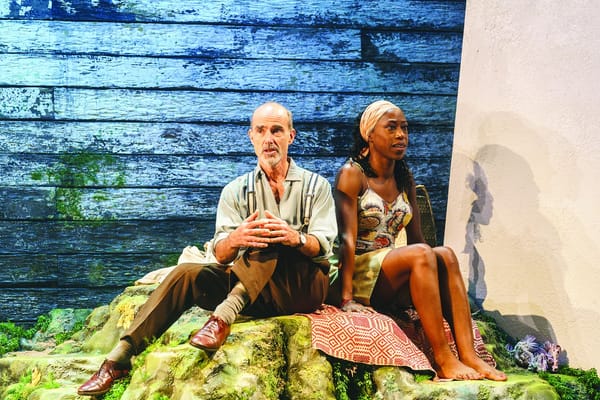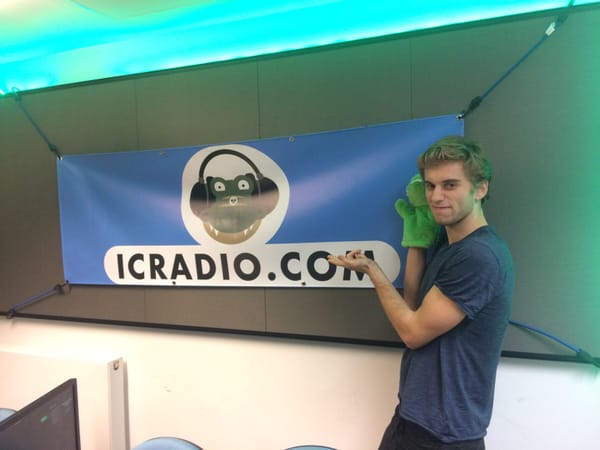Cezanne Portraits at the National Portrait Gallery
Does the collection provide insight into a pioneering genius, or an overrated leftover of Impressionism?

To be honest, I’ve never really understood the greatness of Cézanne. Another big male artist, but with an Impressionist style not as fairy-like as Monet and a technique not as cubistic as Picasso. An in between – someone who never really dedicated himself to any specific style.
Without any expectations to have my mind changed I enter the National Portrait Gallery and the first thing I can’t help but notice is the grandness of the museum. I find my way to the exhibition and walk in. Crisp white walls, high arches, and staff walking around in black uniforms, making sure that no one takes a photograph nor touches the art. The halls are not only filled with art, they are also filled with people. People of all ages, of different styles and nationalities. It did not take long for me to realize that it’s not just any exhibition I’m entering – rather, it’s an exhibition of one of the biggest artists of the 19th century.
“Beneath the technique and colours, Cézanne’s portraits reveal people as their true selves”
We walk through Cézanne’s life and artistic development. We meet more and less important people in his life through his portraits, people who have been there for longer and for shorter periods of time. Most importantly, we meet an ever changing Cézanne – from rough portraits in earthy colors to paintings full of playfulness. The exhibition starts off with some of his earlier works, paintings that are characterized by fast strokes made with a palette knife. The technique that he developed during this phase of his life is often referred to as one of the major contributing factors to the Expressionist movement, characterized by magnified emotional expressions, often communicated through colors and shapes. At first glance the paintings feel pretty brown and colorless, but as you step closer to the frame a palette full of color starts to reveal itself. Blue, green, and yellow, all perfectly clear and distinct at a near distance but from afar creating a unity. There is something wild in this way of painting; the movements of the knife are easily distinguished and create a storm of dull colors.
The color palette intensifies as we continue our tour to the next room. Portraits in bright turquoise, pink, and red show a distinct change in style. The intense colors are weighed down by more gentle brush strokes than seen before. It creates a more impressionistic feeling which is not only by chance: during this period of his life Cézanne encountered several soon-to-be famous Impressionist painters such as Pissarro and Monet. Their influence on Cézanne’s work is clear, with the brush strokes and colors going from earthy and harsh to light, graphic, and flamboyant. The palette knife phase is over, but the geometrical shapes that he used to create with them live on as blocks of color. The playfulness and beauty in this part of the exhibition can easily be appreciated, even by those dragged here by their grandmothers.
Cézanne’s later years were filled with hardships, as reflected in the last room, where portraits in dark colors and self-portraits of an elderly, gloomy version of his old self all contribute to a more obscure atmosphere.
“In the exhibition, we meet an ever-changing Cézanne –from rough early portraits to playful paintings”
Cézanne did not want to flatter people in his portraits, and he refused to paint anyone who expected an improved version of themselves. The people in his portraits are not exceptionally beautiful or interesting to look at. Beneath the technique and colours they are normal people portrayed as their true selves. The wish to create a realistic interpretation of his models becomes clear in the portraits of Hortense Fiquet, more commonly known as Madame Cézanne. Several canvases are dedicated to her quite grumpy face. She is not being painted as a muse, not idolized or embellished. We can see Cézanne’s objectivity in these portraits as they lack any tendency of facial expressions or emotions. This objectivity follows through in all of his work: unlike his colors and technique the faces remain plain. Cézanne is known for his still life paintings, and the way he has chosen to portray his models is more like how you would portray a bowl of fruit rather than a human being. Instead of focusing on the face, the emphasis is on the details around: a pipe, hat, or a not-fully-painted skirt are all details that attract the eye – the details that make the audience search and look around for more.
I have always believed that Cézanne’s work is just plain and boring. This has been proved wrong. After visiting the National Portrait Gallery I have come to realize that he is much more than an in-between: he paved the way for the Cubist movement with his graphic and geometrical technique, inspired Expressionism with his palette knife phase, and is still considered an Impressionist. But there is also a curiosity, a playfulness, and a desire to keep trying new things in all of his paintings. It is the small details, the half painted skirt, the pipe, and the hat, that reveal the curious artist in search of expression.
4 Stars
_Cézanne Portraits is on at the National Portrait Gallery until 11th February 2018. Tickets £18; £16.50 students _









